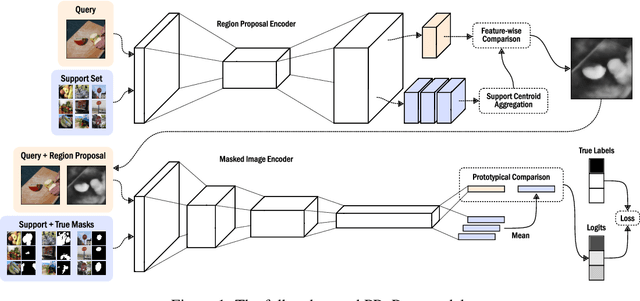Prototypical Region Proposal Networks for Few-Shot Localization and Classification
Paper and Code
Apr 08, 2021


Recently proposed few-shot image classification methods have generally focused on use cases where the objects to be classified are the central subject of images. Despite success on benchmark vision datasets aligned with this use case, these methods typically fail on use cases involving densely-annotated, busy images: images common in the wild where objects of relevance are not the central subject, instead appearing potentially occluded, small, or among other incidental objects belonging to other classes of potential interest. To localize relevant objects, we employ a prototype-based few-shot segmentation model which compares the encoded features of unlabeled query images with support class centroids to produce region proposals indicating the presence and location of support set classes in a query image. These region proposals are then used as additional conditioning input to few-shot image classifiers. We develop a framework to unify the two stages (segmentation and classification) into an end-to-end classification model -- PRoPnet -- and empirically demonstrate that our methods improve accuracy on image datasets with natural scenes containing multiple object classes.
 Add to Chrome
Add to Chrome Add to Firefox
Add to Firefox Add to Edge
Add to Edge